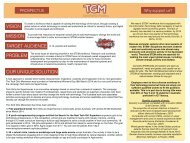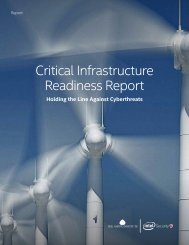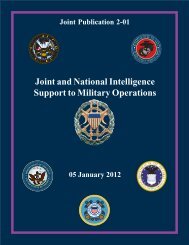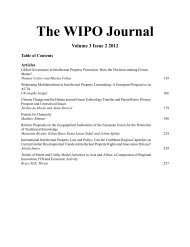Transparency Initiative (EITI)
2eoch1l
2eoch1l
You also want an ePaper? Increase the reach of your titles
YUMPU automatically turns print PDFs into web optimized ePapers that Google loves.
48 Literature review<br />
Management] reforms [as] a serious weakness”. Referring<br />
to the study from Shaxson (2009), it concludes that despite<br />
observable improvements at federal level, the contribution<br />
of N<strong>EITI</strong> remains vague as the introduction of audit<br />
standards and controls are not considered as sufficient<br />
given the volumes of revenues involved. However, for the<br />
case of Mongolia the report indicates that harmonizing<br />
reporting and audit standards as well as improving interministerial<br />
collaboration “has helped Government<br />
and stakeholders target and design actions to improve<br />
performance”.<br />
Wilson/van Alstine (2014: 32) also highlight positive developments<br />
in the case of Ghana between 2010 and 2011,<br />
which they ascribe to the GH<strong>EITI</strong>, yet missing to prove this<br />
assumption with solid empirical data. They point out potentially<br />
confounding factors such as the start of new oil<br />
production sites or the increase of the gold price during<br />
the same period. In contrast to Neumann (2014, see above)<br />
they also attribute the developments in Nigeria to N<strong>EITI</strong><br />
by claiming that the Nigerian government has launched a<br />
value-for-money audit due to the revelations made in the<br />
2012 N<strong>EITI</strong> report (p. 34). However, again the report fails<br />
to provide information how the authors came to this conclusion.<br />
Moreover, they quote (p. 38) a study from Wilson<br />
(2012), which states that the linkage between the creation of<br />
awareness (which apparently can be attributed plausibly to<br />
the initiative) and increased government capacity and performance<br />
is not yet clear.<br />
studies “were not yet able to show a significant effect of the<br />
<strong>EITI</strong> on fighting corruption”. However, it has to be added<br />
that corruption is very difficult to measure and that proxies<br />
such as the Corruption Perception Index (CPI) may not be<br />
suitable as they are highly subjective, as also Valverde (2014:<br />
1f) declares. At least a hint in that direction could be found<br />
in the study of Sovacool/Andrews (2015), referring to an independent<br />
assessment of the <strong>EITI</strong> from Gillies/Heuty from<br />
2011, who apparently found out that <strong>EITI</strong> countries feature<br />
“less leakage in public expenditures”. Yet the empirical basis<br />
for this assessment remains unclear.<br />
Occasionally references to anti-corruption examples can<br />
also be found in other studies, such as the one from Mildner/Lauster<br />
(2011: 100) for the case of Ghana.<br />
Papyrakis/Rieger/Gilberthorpe (2016) use panel data of the<br />
2002-2011 period to explore how <strong>EITI</strong> membership links to<br />
changes in corruption levels. Findings are such, that <strong>EITI</strong><br />
membership offers a shielding mechanism against the general<br />
tendency of mineral-rich countries to experience increases<br />
in corruption over time. This study is based on perception<br />
level as captured by the Corruption Perception<br />
Index (CPI) and has its merits by adding mineral dependency<br />
as a variable, however endogeneity issues are not treated.<br />
Concerning the contribution of the <strong>EITI</strong> to the enhancement<br />
of voice and accountability as well as the perception<br />
of corruption in candidate countries Acosta (2013: 99) summarizes<br />
recent studies, which differ in their assessment to<br />
some extent. The author suggests to consider external factors<br />
such as a countries’ richness of resources or willingness<br />
to participate in the initiative as explanatory factors for the<br />
different findings, which might need to be investigated further.<br />
Schmaljohann (2013: 19) confirms that other recent









